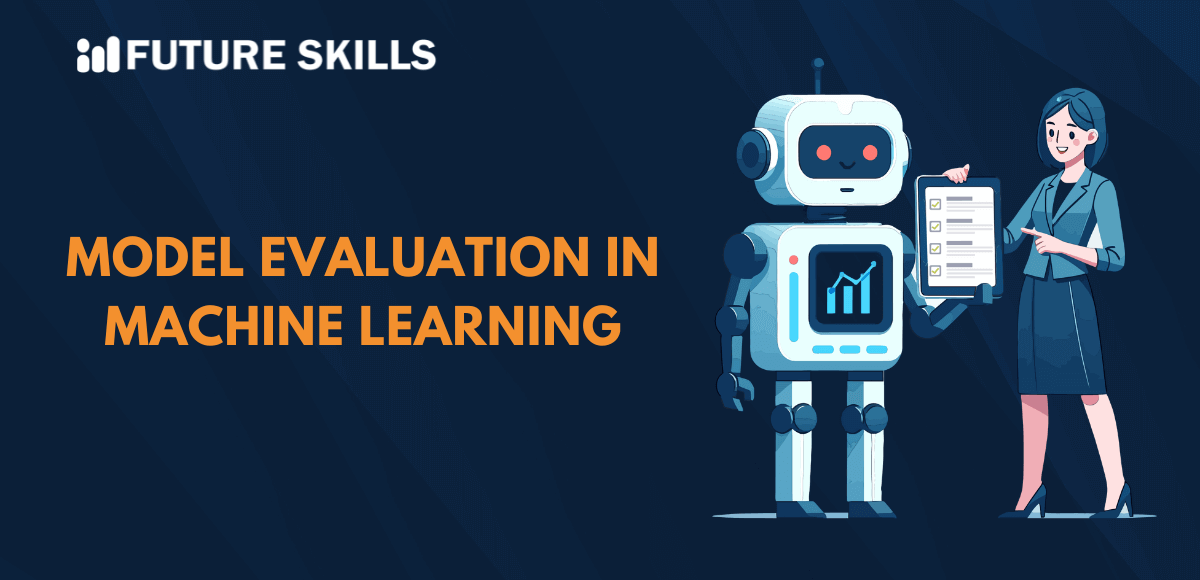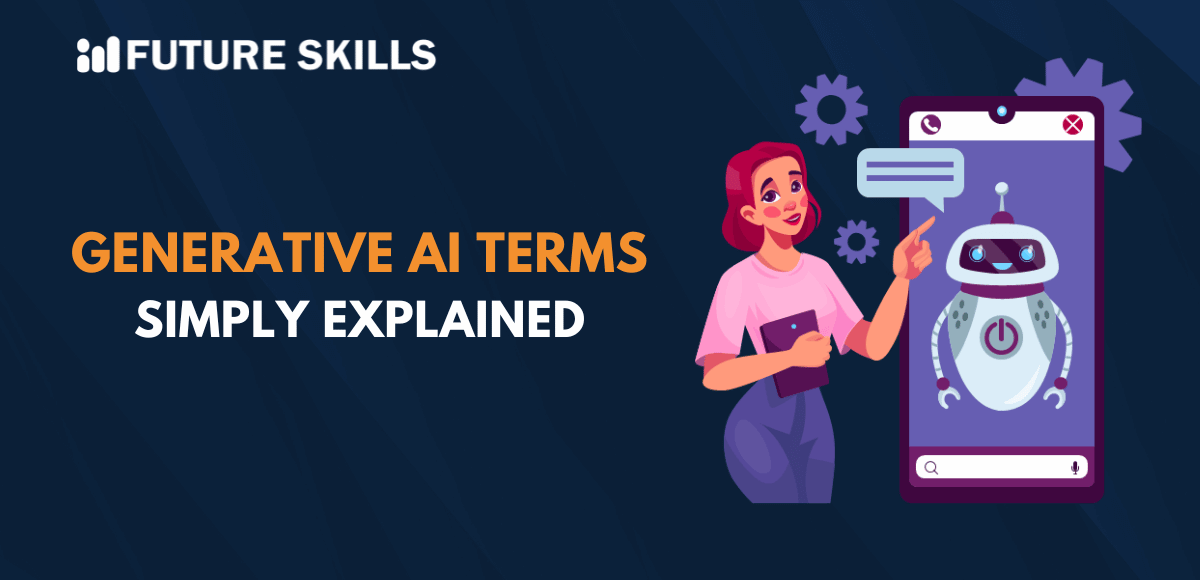Machine learning models run on algorithms that have been trained on specific datasets to perform a particular task. The overall premise of developing machine learning models involves constructive feedback in which researchers use feedback to implement continuous improvements in the models. You would need model evaluation in machine learning to determine whether the model performs according to the desired benchmarks. The performance of a model can differ across various use cases or for different parameters in a single use case.
Many machine learning models cannot make it to the production stage due to setbacks in the implementation of machine learning in various projects. Model evaluation helps in effective assessment of accuracy, quality and performance of machine learning models for the desired task. Evaluation can help in making better decisions about deploying the ML models in production or fine-tuning them to improve performance. Let us learn more about model evaluation in ML with a clear impression of the important metrics, concepts and techniques.
Make the most of AI technology by mastering your prompting skills with our popular Prompt Engineering Certification Program. Enroll today!
Understanding the Definition of Model Evaluation
You can develop a better understanding of model evaluation for ML models by learning the definition of the term. Model evaluation in machine learning focuses on the measurement of the predictive accuracy of machine learning models. Predictive accuracy is a crucial term in machine learning model evaluation process as it describes the accuracy of predictions made by a model on new data. The primary goal of model evaluation revolves around identifying a model that can adapt to new data rather than cramming up the training datasets.
It is also important to note that model evaluation does not focus only on measuring the accuracy of ML models. The model evaluation process also emphasizes the evaluation of other aspects such as fluency in managing missing values, managing class imbalance or resilience to noisy data. All these factors serve a valuable role in improving the overall reliability and performance of machine learning models.
The model evaluation process involves splitting the data into training and testing datasets. The training dataset would help in training the model while the testing set would help in measuring the model performance for new data. You can leverage the unique approach for the simulation of different real-world scenarios in which the model must make predictions on new examples.
Identifying the Relationship between Model Evaluation and Predictive Accuracy
The first step to measure the importance of model evaluation involves a review of the ways in which model evaluation influences predictive accuracy. Predictive accuracy is important in the domain of machine learning as ML models must draw accurate predictions by using real-world data. The utility of a machine learning model declines with its failure to draw accurate predictions about outcomes. Understanding the strengths and weaknesses of machine learning models can support effective optimization alongside avoiding potential setbacks.
The answers to queries like ‘What do you mean by model evaluation in machine learning?’ also showcase that model evaluation helps in addressing different issues. Model evaluation is useful for identifying the concerns of overfitting and underfitting alongside their ideal solutions. Overfitting is visible in scenarios where models perform effectively on the training data albeit while failing in generalization to new data. Underfitting is found in scenarios where you have a simplistic model that cannot capture underlying patterns in data.
Evaluation of machine learning models helps in proactive detection and resolution of issues like overfitting and underfitting. Model evaluation is a critical requirement in every machine learning pipeline for accurate assessment of the quality and performance of machine learning models. The results of model evaluation can help in making better decisions about the optimization and deployment of machine learning models.
Do You Really Need to Evaluate Machine Learning Models?
Some of you might have assumed that model evaluation is a process recommended to improve the optimization of ML models. On the contrary, model evaluation can help you check whether a particular machine learning model is capable of completing the task it was designed for. You can determine the importance of model evaluation in machine learning from the fact that model evaluation verifies the effectiveness of ML models. Model evaluation is an essential requirement to deploy reliable and optimal machine learning models with other benefits.
Model evaluation helps in ensuring optimal performance of ML models as the evaluation process uses multiple benchmarks to measure model performance. The evaluation process also checks that the ML models behave according to expectations through analysis of approaches for mapping inputs to outputs. Model evaluation involves fairness tests, feature contribution, and counterfactual analysis to measure the reliability of ML models.
Another prominent advantage of model evaluation is the assurance of continuous monitoring that opens avenues for reevaluation of models. Comprehensive model evaluation also helps in avoiding financial loss and issues with user experience, especially for critical applications. The most noticeable reason to go for model evaluation for ML models is the assurance of identifying data leakage risks. ML researchers can trust model evaluation as a valuable tool for safeguarding the integrity of their models.
Learn about the most popular and effective Machine Learning Tools and build your machine-learning expertise right away!
Discovering the Best Metrics for ML Model Evaluation
The effectiveness of a model evaluation process depends on the metrics used in the evaluation. You can use ML model evaluation metrics as benchmarks to compare the performance of a ML model against that of other models. The utility of different model evaluation metrics is visible in the specific highlights of a model’s performance they highlight. Take a look at the following important metrics that you can use in ML model evaluation.
-
Accuracy
Accuracy measures the overall correctness of the machine learning model. It involves calculation of the ratio of correct predictions to the total number of predictions. Accuracy is a simple and straightforward metric for ML model evaluation. However, it can provide misleading insights in the case of imbalanced datasets.
-
Recall
Recall is also another important metric in the model evaluation process. It helps in calculating the ratio of true positives to the collection of all false negatives and true positives. Recall is an important classification metric for scenarios where you cannot miss a positive instance.
Other important classification metrics for ML model evaluation include precision, F1-score and ROC-AUC. You would also need other important metrics such as regression and ranking metrics for assessment of machine learning models. Regression metrics such as R-squared, mean squared error or mean absolute error help in measuring the performance of a model on prediction of numerical values. Ranking metrics such as normalized cumulative gain and mean average precision can be useful for models that predict ranks or numbers.
Proven Techniques for Model Evaluation
The insights on meaning and importance of model evaluation alongside the importance of model evaluation metrics create curiosity about ML model evaluation techniques. You can find different machine learning model evaluation techniques such as cross-validation, holdout method and bootstrapping. Each technique has a specific set of traits which make them useful for testing ML models in different use cases.
The holdout method is the simplest model evaluation technique that works by splitting the available data into training set and test set. During the holdout method, the training dataset helps in training the model and the test set helps in evaluation of the model. Holdout method has proved successful in measuring the performance of a model on new data.
Cross-validation is another powerful model evaluation technique that divides the available data into multiple subsets. The model would be trained with a combination of these subsets and the remaining subsets would be used for evaluation. Iteration of the process on different combinations of the subsets can offer a more accurate impression of the performance of machine learning models.
Bootstrapping is also a useful model evaluation technique for ML models. It is a type of resampling technique that works through creation of multiple bootstrap samples. The samples are created through random sampling of the original dataset with replacement. The model would be trained on each bootstrap sample and aggregation of results from the samples can help in determining the model performance.
Know everything about ChatGPT and expand your ChatGPT skills beyond imagination with our Certified ChatGPT Professional (CCGP)™ Course offered for every enthusiastic learner.
Are There Any Challenges in Model Evaluation?
The review of responses to queries like ‘What do you mean by model evaluation in machine learning?’ showcases the importance of model evaluation. It is also important to understand the challenges for model evaluation to ensure that the evaluation process is effective. The most prominent challenges in model evaluation include data leakage and class imbalance, which have far-reaching practical implications. For example, data leakage happens in scenarios where information from the test set can affect the training process.
Final Thoughts
The introduction of model evaluation in the domain of machine learning research has strengthened the foundations of AI and ML. You can use model evaluation in machine learning to uncover accurate insights about the performance of your models. It can help in avoiding security concerns and performance issues in ML models before deploying them.
Model evaluation also offers the advantages of ensuring integrity of ML models alongside pointing out the areas that require improvements. You must also understand the important requirements, techniques and challenges for ML model evaluation. Find more insights on machine learning models and their working mechanism to develop better understanding of ML model evaluation now.







